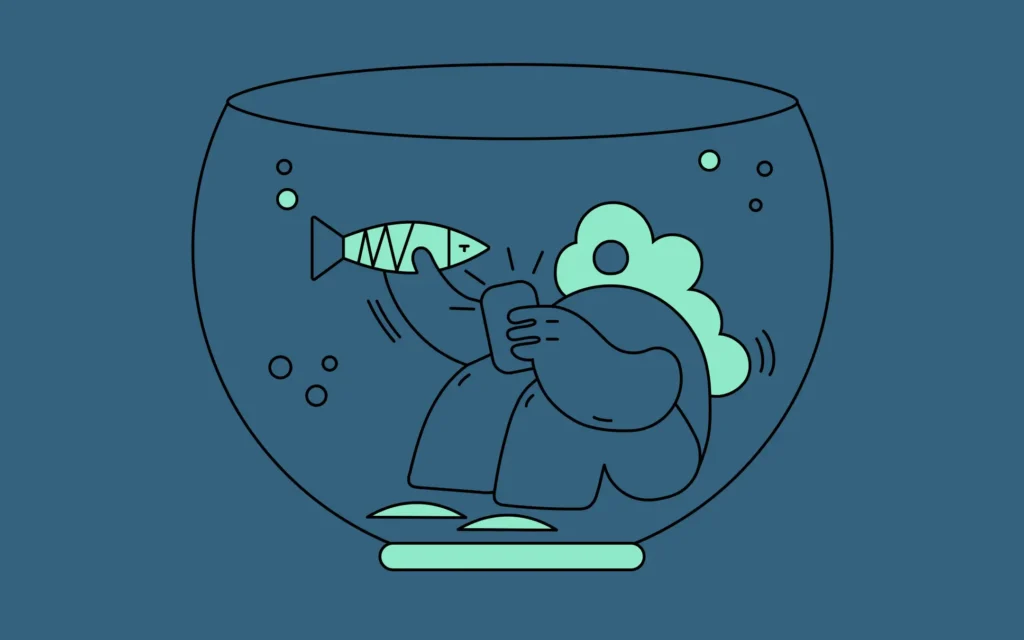Your Audience of One
Your Audience of One

Know your audience.
In Western culture, this instruction starts with Aristotle, mainly. Living in a time when public speaking decided the fate of nations, he figured out that the most logical argument didn’t always win. More often, the winning argument came from the person who knew the audience best, and played on its ideas and emotions most persuasively.
Fast forward 23 centuries or so, and it’s still true.
Whenever we start a project for a client, the first question is, “Who’s in the audience?” For most projects, the answer is simple. It’s employees, or customers, or investors. Once we know that, we’re able to focus in on known traits and expectations.
There are two giant exceptions. The first is a corporate website. It’s like a hotel lobby that has to be inviting to everyone, because you don’t know who will walk through the door. You can design the lobby to send signals to people about whether they should check in or not, but you can’t decide for them.
You have to make it possible for them to self-select – and that’s why so many websites today offer multiple front doors for people to go through. Each one signals to its intended audience, “Here’s what you’re looking for.” We willingly go through whatever door we think is right for us, because we know we can back up and go through another door, or just jump over to that door with a click or two.
The other giant exception is sustainability reporting. Unlike annual reports, which have one audience and one purpose, sustainability reports are optional. No one has to produce one, or share it with anyone, unless they want to. There’s no required set of facts or data that everyone has to disclose. This total uncertainty opens up the audience equation to the maximum extent.
When we sit down with clients for a sustainability report and ask “Who’s in the audience?,” the answer is almost always the same: “Everybody.”
Imagine you’re in this position. You know you can’t pander to customers and offend your employees and environmental activists. You don’t want to cave to outside stakeholders and make customers think your company has gone soft on them. There’s already a financial report for investors – but some of your investors are socially responsible and want to see your sustainability report, too. You need to satisfy them all, and they all want different things from you. So what do you do?
You conceive of them as one person.
If this seems strange, or counter-intuitive, think for a moment about your own consciousness. It’s astonishingly complex. We humans can hold all kinds of information and opinions in our minds at the same time, and we naturally tolerate conflicts and ambiguities inside ourselves that would be hard to explain to others.
Yet we can be reached, and persuaded, and sold things, and made to laugh and cry on cue at the movies. Somehow we resolve all our complexity in certain moments, for certain subjects. When we do this, and someone offers us a compelling story or argument, strong communication takes place.
For years I wrote for regional newspapers and national magazines with broad audiences, and I got in the habit of imagining every person I passed on the street as a potential reader. At first it felt schizophrenic. “My audience is the woman with the diamond necklace. No, it’s the Jamaican couple selling street art. Wait, it’s the cable guy!”
Eventually, though, being able to do this became a secret weapon. All the people in the audience became one person, and that one person wanted a good story.
With sustainability reporting, we need to make all our audiences into one person. She might have the critical mind of a lawyer, the hopes and fears of a consumer, the passions of an equal rights campaigner, and the guts of a commodities trader. Yet she’s one person, and we can reach her.
We just have to ask a slightly different first question. That question is, “What’s the story my audience knows now?” Once we construct that, we can build on it to tell a new story about sustainability.
Many companies have a purpose beyond profit, but they are not communicating it well because they are still trying to treat multiple audiences differently at the same time. The web and social media make it easy for this strategy to backfire, because we can all see what’s going on. And we don’t like anything that seems insincere.
It would be better to conceive of us all as an audience of one, and level with us. What do we know now? What do you want us to know about you?
And by the way, have you got a good story for me?






